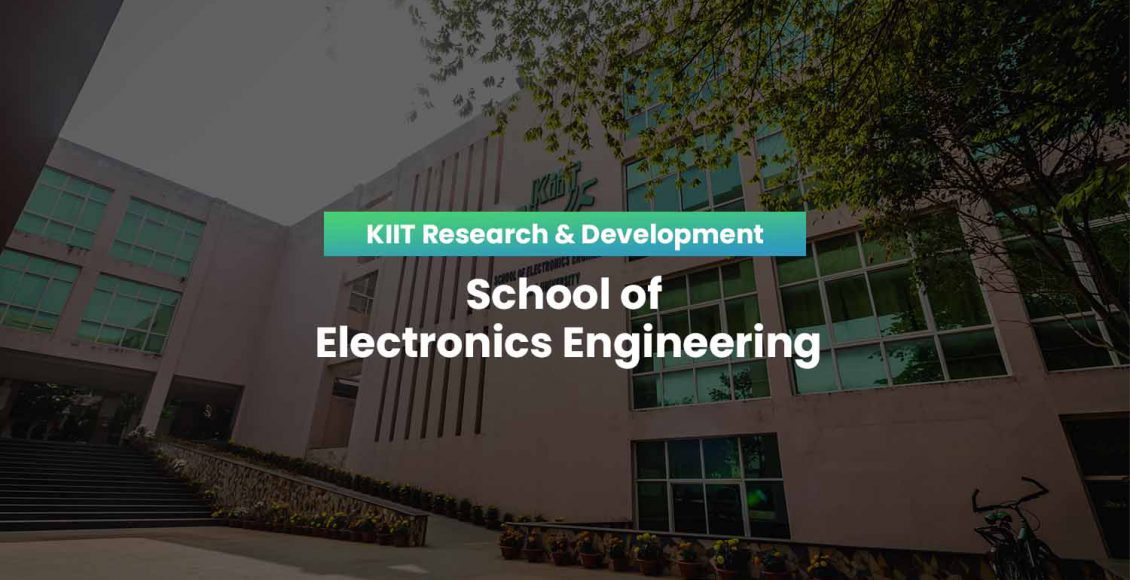School of Electronics Engineering (November 2021)
Journal Papers
1. Prasad, R., Das, A. K. and Singh, U. P. (2021), Impact of Buffer Layers on the Performance of Graded CIGS Solar Cells: A Numerical Approach. Applied Physics A, Vol. 127, 816, https://doi.org/10.1007/s00339-021-04954-3.(IF: 2.584).
Abstract
Conventional buffer layer of CdS, which is closely optimum for CIGS with smaller bandgap shows poor alignment for higher Ga ratio CIGS absorber with higher bandgap. Ga to In ratio change can lead to two different types of conduction band offsets (CBO), positive CBO leads to “spike” and negative offset results in “cliff”. The optimum spike offsetof 0.3 eV is achievable in case of higher bandgap CIGS absorbers using Zn based bufferlayers like Zn1-zMgZO and ZnS. Zn1-zMgzO is the most promising of the three buffer layers and shows the efficiency up to 25.48 % under AM 1.5 G illumination.
2. Padhy, S, Kumar, V, Chaure, N. B, and Singh, U. P. (2022), Impact of Germanium Nano Layer on the CZTSe absorber Layer Properties, Materials Science in Semiconductor Processing, Vol.138, 106276, https://doi.org/10.1016/j.mssp.2021.106276,(IF: 3.926).
Abstract
The present work demonstrates the effect of Germanium (Ge) thin layer incorporation on the CZTSe films. The Ge thin layer was deposited on the backside of the CZTSe as well as in between the CZTSe. The films were prepared with the help of thermal evaporation technique in stack format using all the constituents. Subsequently, the films were subjected to selenization process in order to get the Germanium doped CZTSe films. Several properties, suchas structural, morphological, optical and electrical, of the undoped CZTSe and Ge doped CZTSe absorber layer with change in Ge thin layer incorporation position were investigated.
3. Mohanty, A., Acharya, O. P., Appasani, B., Mohapatra, S. K. and Khan ,M. S. (2021), Design of a Novel Terahertz Metamaterial Absorber for Sensing Applications, IEEE Sensors Journal, Vol. 21, No. 20, pp. 22688–22694, doi:10.1109/JSEN.2021.3109158.
Abstract
This paper presents and evaluates a new terahertz metamaterial absorber (MMA) for sensing applications. The reported structure consists of two identical metallic patches, a dielectric spacer and a ground metal plane. The finite element approach has been utilized to simulate and analyse the design. It is found that the MMA offered a prominent resonant peak with near 100% absorbance at frequency 4.5 THz due to the resultant effect of coupling between the two identical patches. In addition, surface current distribution, absorption mechanism and structural parametric analysis have also been investigated. As a result of its highly sensitive sensing capabilities, the proposed design can be employed as a sensor for refractive index, having 1.6 THz per refractive index unit (RIU) sensitivity and figure of merit (FoM) of 80 in terms of change in RI of the environment. The majority of biomedical samples have RI of 1.3 to 1.36.
Conference Papers
1. Mishra, A., Mohan, A., Mandal, A., Mohanty, A., Chowdhury, A. (2022), Automation in Retail Follow-Me-Auto Shopping Cart: A Self-propelled Computer Vision-Based Shopper Following Cart with Auto-Billing Feature Using IIoT. In: Natarajan, S.K., Prakash, R., and Sankaranarayanasamy K. (Eds),Recent Advances in Manufacturing, Automation, Design and Energy Technologies. Lecture Notes in Mechanical Engineering. Springer, Singapore.https://doi.org/10.1007/978-981-16-4222-7_54.
Abstract
This paper presents an automatic shopper following shopping cart system with auto-billing feature using Radio Frequency Identifier (RFID) technology and motor drive control system for a mechanized trolley using a novel finite state machine (FSM) based on object tracking method to get hands free movement. The object tracking and motion sensing is done through Computer Vision (CV) algorithm. The trolley is equipped with Raspberry Pi 4 with OpenCV for Image processing along with an IEEE 802.11 (Wi-Fi) module that sends real time product check out data to a cloud-based web application with the vision of industry 4.0 using Industrial Internet of Things (IIoT).


